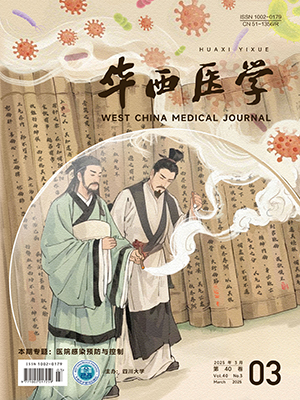Citation: ZONG Huiyan, HE Yi, GUO Hua, DING Mingfu, HU Rongqing, Xiao Zezhao, WANG Xiaohong. Exploration of referral patterns for rehabilitation of patients with spinal cord injury in community hospitals. West China Medical Journal, 2017, 32(3): 404-407. doi: 10.7507/1002-0179.201504167 Copy
Copyright © the editorial department of West China Medical Journal of West China Medical Publisher. All rights reserved
-
Previous Article
Application of fast-track surgery through multidisciplinary cooperation for perioperative period of liver cancer RENQiuping, LUO Yanli -
Next Article
Analysis on the influencing factors of anxiety and depression in spinal cord injury patients based on patient-environment-occupation model WANGFengyi, LI Zhi, YU Hongling, PI Zhiqiang, LIN Yang, YANG Yonghong




